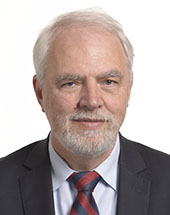Sitemap.xml.gz

- News
- About us
- Members
- Partners
- Events
- Activities
- Documents
- Newsletter
- Contact
- ?s=%e5%ae%b3%e6%80%95%e5%a4%b1%e5%8e%bb%e7%9a%84%e5%8f%a5%e5%ad%90 %e3%80%90%e2%9c%94%ef%b8%8f%e6%8e%a8%e8%96%a6bb87%c2%b7cc%e2%9c%94%ef%b8%8f%e3%80%91 %e5%a5%b3%e4%ba%ba%e6%92%90%e8%82%9a%e5%ad%90%e8%ae%8a%e5%a4%a7%e5%85%a8%e9%81%8e%e7%a8%8b %e5%ae%b3%e6%80%95%e5%a4%b1%e5%8e%bb%e7%9a%84%e5%8f%a5%e5%ad%90xuofy %e3%80%90%e2%9c%94%ef%b8%8f%e6%8e%a8%e8%96%a6bb87%c2%b7cc%e2%9c%94%ef%b8%8f%e3%80%91 %e5%a5%b3%e4%ba%ba%e6%92%90%e8%82%9a%e5%ad%90%e8%ae%8a%e5%a4%a7%e5%85%a8%e9%81%8e%e7%a8%8b0ntz %e5%ae%b3%e6%80%95%e5%a4%b1%e5%8e%bb%e7%9a%84%e5%8f%a5%e5%ad%90lwmft %e5%a5%b3%e4%ba%ba%e6%92%90%e8%82%9a%e5%ad%90%e8%ae%8a%e5%a4%a7%e5%85%a8%e9%81%8e%e7%a8%8bn2yt
- ?s=%e9%97%a8%e5%89%8d%e7%9a%84%e5%b0%8f%e6%a0%91%e5%b7%b2%e6%88%90%e5%b9%b4%e6%ad%8c%e8%af%8d %e3%80%90%e2%9c%94%ef%b8%8f%e6%8e%a8%e8%8d%90bb76%c2%b7cc%e2%9c%94%ef%b8%8f%e3%80%91 %e5%88%9d%e4%b8%ad%e7%94%9f%e7%94%b7%e7%94%9f%e7%a9%bf%e8%a1%a3%e6%90%ad%e9%85%8d%e5%9b%be %e9%97%a8%e5%89%8d%e7%9a%84%e5%b0%8f%e6%a0%91%e5%b7%b2%e6%88%90%e5%b9%b4%e6%ad%8c%e8%af%8dzvpdn %e3%80%90%e2%9c%94%ef%b8%8f%e6%8e%a8%e8%8d%90bb76%c2%b7cc%e2%9c%94%ef%b8%8f%e3%80%91 %e5%88%9d%e4%b8%ad%e7%94%9f%e7%94%b7%e7%94%9f%e7%a9%bf%e8%a1%a3%e6%90%ad%e9%85%8d%e5%9b%bed0he %e9%97%a8%e5%89%8d%e7%9a%84%e5%b0%8f%e6%a0%91%e5%b7%b2%e6%88%90%e5%b9%b4%e6%ad%8c%e8%af%8duev5a %e5%88%9d%e4%b8%ad%e7%94%9f%e7%94%b7%e7%94%9f%e7%a9%bf%e8%a1%a3%e6%90%ad%e9%85%8d%e5%9b%beyw6o
- Where to buy latanoprost in alberta online
- How to get prescribed kaletraofs3tqgw~hmyejzwtufwq3jzwtuf3jz
- Janumet xr cp online
- How much does macrobid cost at walgreens
- 201205meeting in strasbourg 16
URBAN Bureau
 Vice-President
Vice-President
Keller Fabienne, Renew Europe (France)
 President
President
Olbrycht Jan, EPP (Poland)
 Vice-President
Vice-President
Schieder Andreas, S&D (Austria)

Keller Fabienne, Renew Europe (France)

Olbrycht Jan, EPP (Poland)

Schieder Andreas, S&D (Austria)
Jan Olbrycht – President of the URBAN Intergroup
European Parliament, ASP 14E101
60 rue Wiertz, 1047 Brussels
ofs3tqgw~hmyEjzwtufwq3jzwtuf3jz
tel.: +32 (0)2 28 455 11
European Parliament, ASP 14E101
60 rue Wiertz, 1047 Brussels
ofs3tqgw~hmyEjzwtufwq3jzwtuf3jz
tel.: +32 (0)2 28 455 11
Photo © European Union, 2011